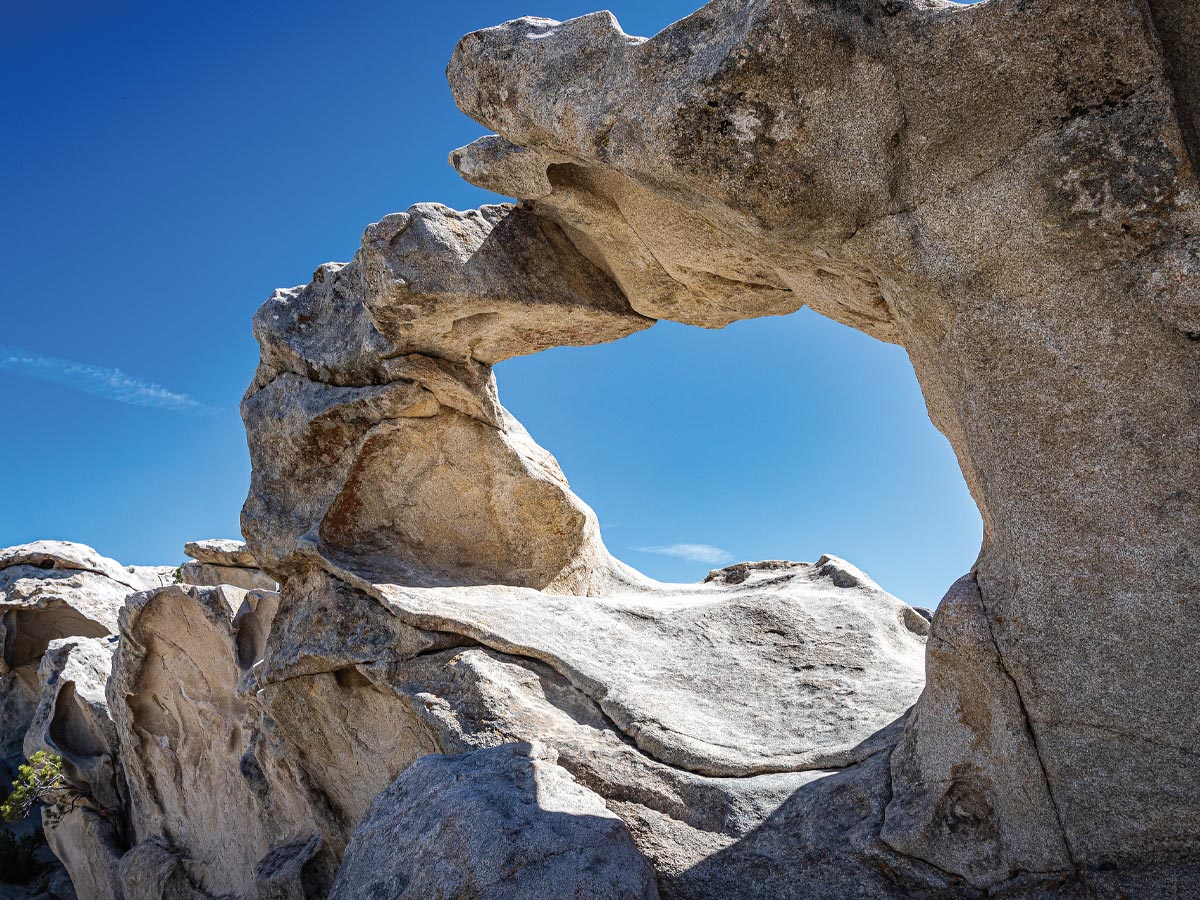Showcasing some of the oldest exposed rocks west of the Mississippi River, Idaho’s City of Rocks National Reserve and neighboring Castle Rocks State Park boast over a thousand climbing routes, attracting 60,000 sport rock climbers a year from all over the nation.
According to Wallace Keck, a state park employee who is the Superintendent of the Reserve and Chief Ranger of the state park, in 1969-70 some young guys from Utah “discovered” the City of Rocks and the climbing opportunities here.
“It quickly became the hip place to climb, and it remains enormously popular today,” Keck said. “We even have a few folks who like to ice climb here in the winter.”
But rock climbing is only one activity visitors can try here. Hiking, snowshoeing, Nordic skiing, biking, birding, fishing, horse back riding, 3-D archery, and hunting are all available, depending on the season.
Snowshoeing is one of the best ways to experience the area.
“We rent snowshoes at the Visitor Center, and, during this time of COVID-19, it’s a great activity because everyone stays at least 6 feet apart.” Keck said. “Ranger-led snowshoe hikes are very popular and a great way to learn about the Reserve.”
The Visitor Center, located in Almo, Idaho, is open seven days a week in the high season, 8 a.m. to 4:30 p.m. and Tuesday through Saturday in the winter months from 8 a.m. to 4:30 p.m.
Cross country skiing is an on-your-own activity but there are miles of closed roads to travel although none are groomed.
“In winter it really becomes the Silent City,” said Keck. “You might be one of only a few visitors in the 14,000 acres, and all you hear is your own heartbeat.”
During this quiet time of year, visitors might see moose, bighorn sheep, and large herds of mule deer—up to 80 deer at a time—moving throughout the park.
Spring through fall means birds, and lots of them. Some birds are residents while others visit while migrating.
“This area has some of the best birding in all of Southeast Idaho,” Keck said. “We’ve identified 178 species in the Reserve and state park. The Crossbill is an endemic bird only found here. And, we have a lot of species that stop here at the northern edge of their range.”
Birders will find several activities to engage in from the Big Day Birding Blitz held the first Saturday in June to the Christmas Bird Count and the Breeding Bird Census in spring.
“Our rangers enjoy taking visitors on bird walks, so be sure to stop in the Visitor Center and ask if that will be happening,” Keck said.
As an enthusiastic birder himself, Keck said he’s happy to mark on the Reserve map where a visitor might look for different species. The Center also has a useful birder’s guide for $5.
If fishing is your thing, then Castle Rock State Park has a stocked pond with nice-sized rainbow trout just waiting to grab your lure.
“This is a year-round activity,” said Keck. “We see a lot of ice fishing in the winter, and in summer it’s the perfect place for a kid to catch her first fish.”
If you’ve ever wanted to try archery, the state park has a 3-D archery range with life-sized game targets.
“The course is suitable for competition,” says Keck. “We have a thriving bow hunting crowd that hunts here after Labor Day, and we’re hoping to set up some mini tournaments in the near future.”
For visitors who might have mobility issues, the park offers an auto tour route from April to October. A $5 trail guide from the Visitor Center tells about the sites along the 7-mile route.
“If visitors stop in and ask if there’s going to be a ranger-led auto tour, and we have a ranger free, we’re happy to lead even just one car,” Keck said. “There is a lot of history explained along the auto tour, which was a major immigrant route leading to Oregon and California from 1843-1882. The stories rangers tell really add to the experience.”
Hiking is a popular activity in both parks. Backyards Boulder Trail, a 2-mile loop, and Castle Rocks Trail, a 5-mile loop, get top marks in Castle Rocks State Park. In the Reserve, Window Arch Trail, Bath Rock Trail, and Creekside Towers are all short paths. The Geological Interpretive Trail is a 1.2-mile loop, and Flaming Rock is only .76 miles, but it is quite strenuous.
By visiting both websites, you can find out about camping options, including equestrian camping. In addition, the Reserve has an active Facebook Page as well as a popular birding blog.
Visitors will discover that Idaho’s Silent City is truly unique, with strange rock formations and some granite spires soaring 700 feet throughout the reserve and state park. Whether you come in winter to experience the quiet or plan a trip in spring to see waves of wildflowers, or whether you are an active birder hoping to add to your Life List, or are an adventurous rock climber, there’s something for everyone in this silent corner of Idaho. ISI










